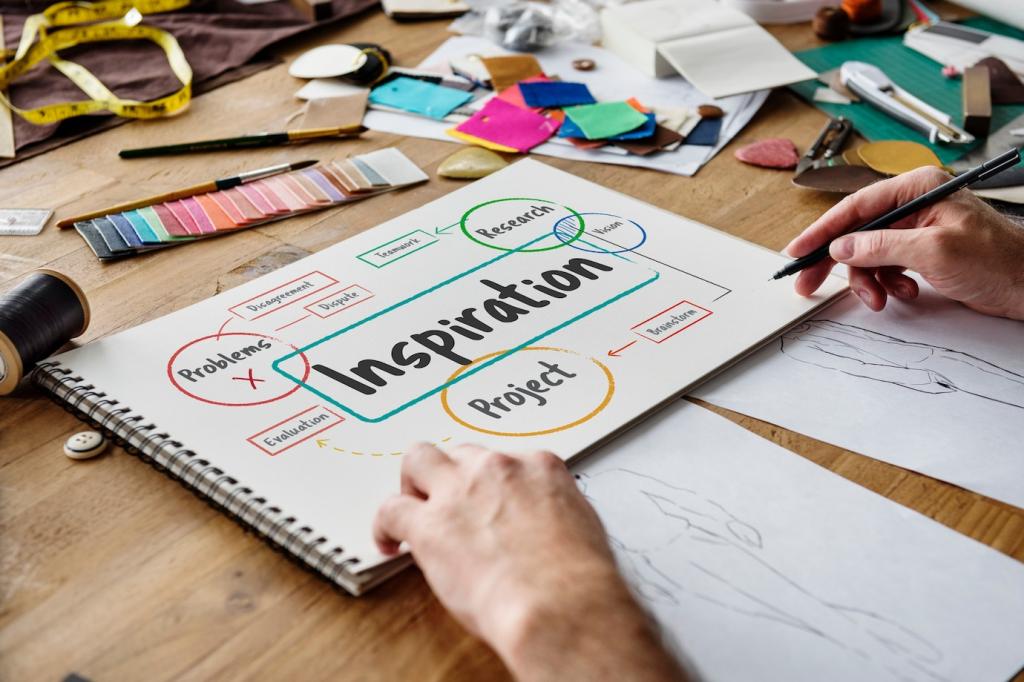AI-driven Methods for Unique Interior Spaces
AI-driven methods are revolutionizing the world of interior design, enabling professionals and homeowners to create innovative, tailor-made interiors like never before. By harnessing the power of machine learning, generative design, and advanced data analysis, spaces can be transformed in ways that reflect individual personalities and preferences, while pushing the boundaries of creativity and practicality. This page explores how artificial intelligence is influencing and elevating the process of designing truly unique interior environments.

Automated Room Layout Optimization
Automated room layout optimization leverages deep learning algorithms to process the dimensions of a space, the intended function of each area, and the client’s style preferences. The AI swiftly suggests multiple configurations that maximize usable space and enhance comfort. By learning from vast databases of successful layouts, this method reduces trial-and-error, allowing designers to visualize and select optimal arrangements that might otherwise have been overlooked, resulting in environments that are both efficient and uniquely tailored.
Personalized Zoning Solutions
Personalized zoning solutions analyze how individuals move through and use different areas of their space. AI tools track activity patterns and adjust the division of rooms or open spaces accordingly, ensuring each zone serves a specific, meaningful purpose. Whether creating a seamless transition between work and relaxation areas at home or balancing collaborative and private zones in an office, these solutions respond in real time to the evolving lifestyles and habits of occupants, achieving truly distinctive layouts.
Adaptive Space Forecasting
Adaptive space forecasting with AI involves predictive algorithms that anticipate future changes in how a space will be used. By studying historical data and trends, these systems can suggest design changes before the need arises—like transforming a nursery into a home office or expanding communal areas as families grow. This forward-thinking approach ensures interiors remain relevant, personalized, and unique over time, fostering spaces that grow and adapt alongside their users.
Generative Design for Décor Innovation
Custom Pattern and Surface Generation
Custom pattern and surface generation employs generative adversarial networks (GANs) and other AI models to dream up entirely new motifs and textures for walls, floors, and furnishings. By blending art history, client inspiration, and trend forecasting, AI can propose bespoke designs that have never existed before. This capacity ensures each element—whether it’s a statement wallpaper or a unique rug—contributes to an interior that feels deeply personal and visually striking.
Algorithmic Color Palette Creation
Algorithmic color palette creation uses AI to analyze innumerable input sources, from the surrounding landscape to a user’s wardrobe, and generate harmonious color combinations tailored to the space and individual. These tools suggest palettes that evoke specific moods or align with brand identities, transcending basic swatches to create immersive environments. By factoring in evolving tastes and trends, AI ensures spaces maintain their unique flair and emotional resonance over time.
Intelligent Furniture Design
Intelligent furniture design blends parametric modeling and machine learning to devise furnishings that fit perfectly within both the spatial constraints and aesthetic vision of a project. AI considers ergonomics, traffic flow, and user preferences to recommend original shapes, sizes, and multi-purpose solutions. Designs can be modified instantly based on feedback, allowing for rapid prototyping and ultra-customized pieces that define and differentiate every interior.

Behavioral pattern recognition utilizes sensors, smart devices, and data analytics to study how occupants interact with their environment. AI interprets data like daily routines, preferred comfort levels, and ambient preferences to recommend design modifications. This ensures the design is not only unique, but genuinely beneficial to those who use the space, improving everything from workflow efficiency to relaxation and well-being.

